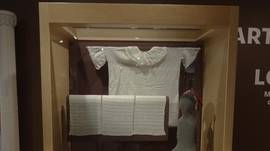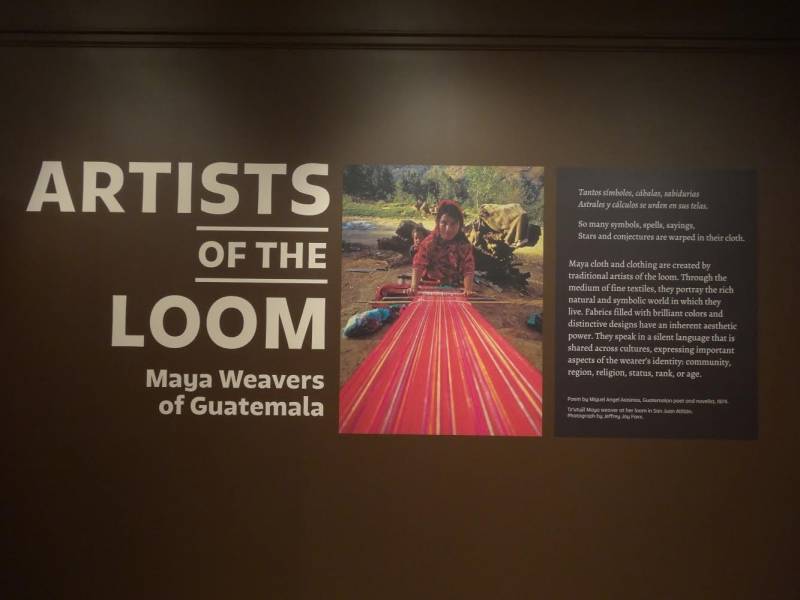
The last time I stopped by the Spurlock Museum on campus, the Campbell Gallery was home to a collection of James Bond film props and memorabilia. The current exhibit couldn’t be any different, exemplifying the broad range of what Spurlock has on display at any given time. “Artists of the Loom: Maya Weavers of Guatemala” will occupy the space until January 25th. Many of the textiles are in the form of huipils (pronounced something like “we-pill”), the brightly colored traditional garments worn by women in Central America.
According to Spurlock’s website, “This exhibit celebrates not only the artistry and endurance of the Maya weaving tradition but also the cultural intelligence and creative force of the weavers themselves.” Over ninety textiles, some of which are over a hundred years old, are presented in the gallery from a range of different highland communities. The exhibit is filled with information, both printed and in video form.
I caught up with Tandy Lacy, the director of Spurlock’s education section, to get the lowdown on the exhibit. “We are responsible for a wide variety of interpretive activities,” she said, “from tours and outreach to the community, to being immediately involved in producing exhibits and managing the collections section of the museum, the storyline, and managing the text. For this exhibit, we worked with a guest curator who is located in California.”
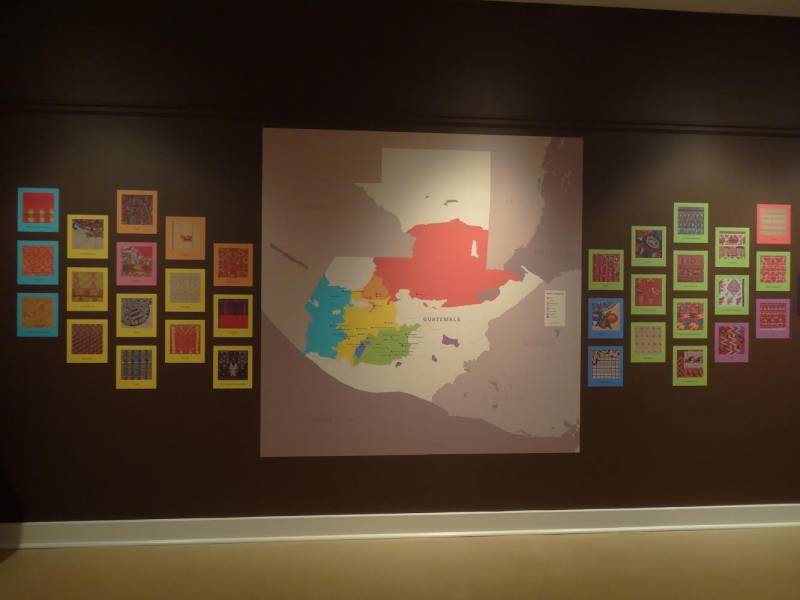
On the origin of this collection, Lacy said, “In a way, it is a celebration of a fairly large collection that we’ve received over the past several years from a donor named Jerry Lopez. Over a period of about forty years, he and his wife amassed a large collection of over six hundred textiles, and we engaged Margot Schevill, a scholar in California, to come in and review the collection and advise us about the pieces we should take, because you take on a huge responsibility when you take such a large body of material. Especially textiles. They have their own special needs in terms of care. We decided, based on her recommendations, to take this collection. It’s a celebration of cultural diversity.”
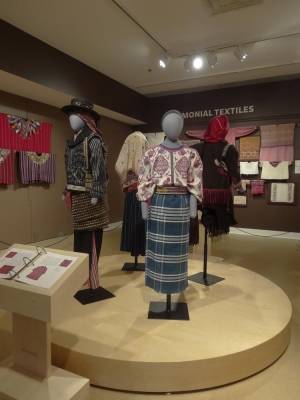 Lacy guided me through the exhibit, which comes from thirty-two different towns in Guatamala. Each textile is distinct in that it represents a specific weaving style, as the styles vary across the different Guatemalan villages being represented. Information presented links the ancient Mayan culture to the currently surviving Mayan culture.
Lacy guided me through the exhibit, which comes from thirty-two different towns in Guatamala. Each textile is distinct in that it represents a specific weaving style, as the styles vary across the different Guatemalan villages being represented. Information presented links the ancient Mayan culture to the currently surviving Mayan culture.
One of the more important items showcased is the backstrap loom, located right in the front of the gallery, which is “One of the most significant pieces of understanding this weaving,” according to Lacy. “The weaver has what appears to be a much more simple loom, but the type of weaving that can be accomplished is far more complex than anything that is done on a European style floorloom. The weaver inserts threads of different colors and using a variety of different techniques; so, as she’s weaving a more simple base cloth, she’s also creating a surface texture and imagery in a very immediate and personal fashion on and in the fabric that she’s weaving.”
Spurlock has eight mannequins set up to show off the different clothing for daily wear and ceremonial use. I seriously cannot stress the word “color” enough. This is one of the most vibrant displays of cultural heritage I’ve personally laid eyes on, and it really stands out in the museum.
Lacy said that, if people are interested in artistry, they need to check out the display. “They will be looking at some of the most complex and highly various weaving that you can find in the world,” she said. “This Mayan weaving is tremendously important to people who are interested in weaving. If they are interested in the significance of material culture and identity, they will be interested to know that each one of these communities can be identified through these textiles. They will be fascinated to learn that, in these highland communities, people communicate in a visual medium. Even people who are not speaking the same language who travel to markets in Guatamala have learned over time that they can identify the locations people come from by what it is they’re wearing.”
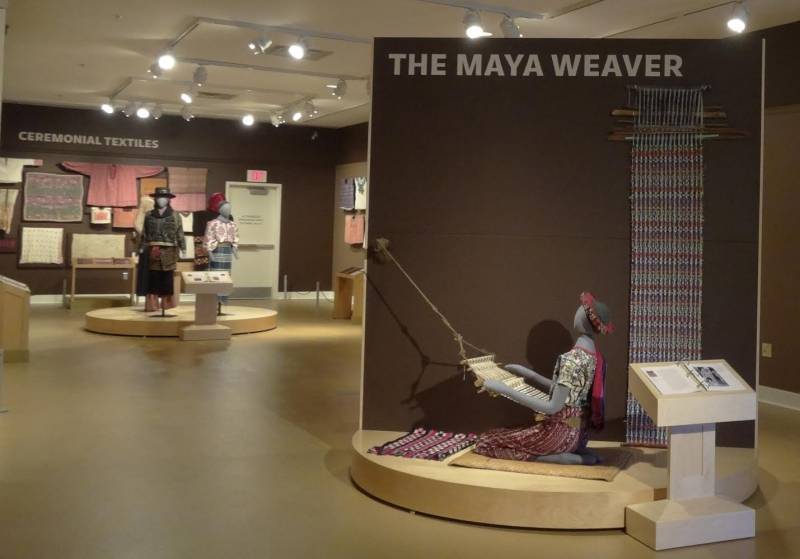
“I think the backstory is what makes this exhibit most interesting,” said Elisio, Lacy’s intern who accompanied us through the gallery. “There was a thirty-six year period where people could not wear their emblems because of the civil war in Guatamala. During that time, the government tried to oppress the people of the highland villages. These textiles are still thriving nowadays, and it goes back to the fact that these people really care a lot about their symbols and their communities to continue producing these textiles. I think that’s something a lot of people will find really interesting in this exhibit.”
“The impact of the civil war is something that, of course, there will be a lot written about, because that war essentially ceased not very long ago,” Lacy said. “The fact that you’re looking at an art form that is traced back to the ancient Maya that has endured Spanish conquest and occupation, has endured civil war that lasted for thirty years, is pretty significant.”
While you’re at it, you can check out the other permanent exhibits on display at the museum as well, but don’t screw around. Spurlock takes this stuff seriously. Security guards with secret service style earpieces maintain a visible presence and Lacy wouldn’t even tell me where they house the collection items when they’re not on display. For good reason, though. The Spurlock Museum is home to some of the most important cultural items in the area, and “Artists of the Loom” is a showcase of just one of these high profile collections.








